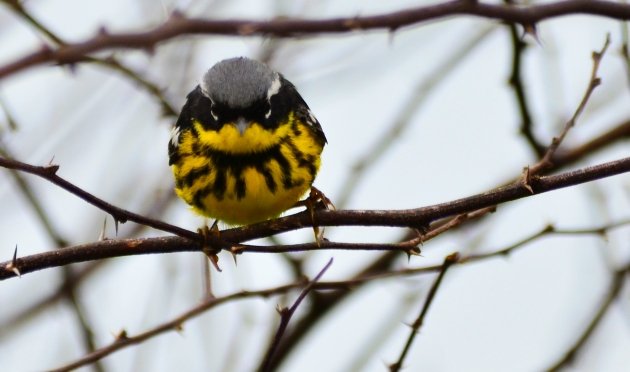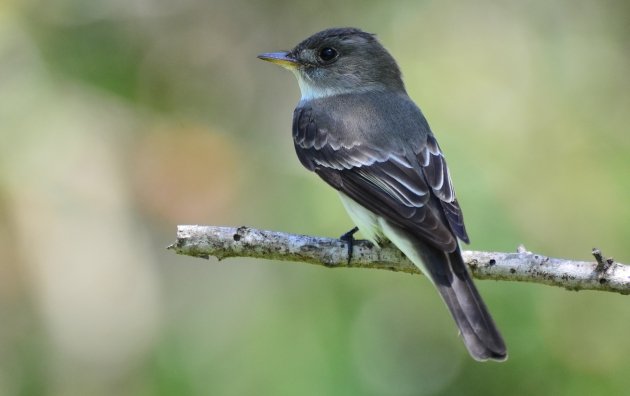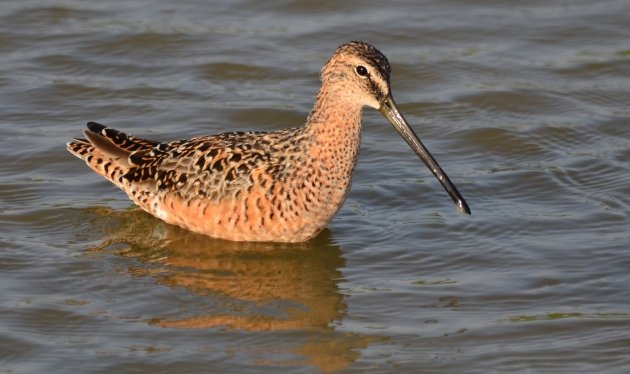
So you want to dip your feet into the murky, highly questionable waters of the Birdosphere eh? Well, although I am hard at work being the leading world birder, I’ve somehow had the time to become an old hand at this blogging stuff as well. Among the things that more and more birders have mentioned to me over the years is their urge to start their own birding blog, but they just don’t know how to go about it. Well, I am here for you…I have always found it fitting that the most beloved birder makes his home at the world’s most-trafficked birding blog…I sit atop a mighty precipice of power birding and bird bloggery…and in my position as being a leading light, it feels only right to give back to all the would-be bloggers out there. So let’s cut through the bull and get to the sweet, nectary knowledge that must be consumed immediately.
1. Be committed. Like the Magnolia Warbler (above) must go north every spring, the blogger must blog. Even if you are only committed to posting every few weeks, that is still commitment. The reason most bird blogs start collecting dust over time and eventually become derelict is not because the blogs are total rubbish (shocking, I know), but because people just can’t commit to posting with any regularity. When there is a will, there is a way.
2. Pick a platform. It’s easy. Some people prefer WordPress (which is what 10,000 Birds uses), some people prefer Blogger. Setting up your blog takes very little time. Each has advantages and disadvantages, but are not vastly different. Most importantly, they make everything pretty straightforward, from your blog’s layout to embedding photos. I don’t recomment Tumblr, because part of it’s appeal (simplicity) also really limits what you can do. You can strike out on your own and start your own website, but most people aren’t that web-savvy.
3. Everyone has a different goal in mind with their blog; if you don’t have one, figure it out. See if what you want to do and what you can do are in alignment, which could take a while. For example, some people want their blogs to be really photo-heavy and light on the wordage; this works best if you are a gifted photographer. Most of us are not. On the contrary, if you want to write posts that read like essays but have no accompanying photos, you better be a pretty good writer. Most of us are not.
4. Whenever you get down to the task of sculpting an individual post, ask yourself, “What would I want to see?”. Put yourself in a reader’s shoes. Is what you are going to post fun to read or look at? Original or educational? Or is it repetitive and mediocre? For example, lets say you wanted to discuss the finer points of alternate plumage Long-billed Dowitcher. I think you would agree that you should be able to put up some crushy dowitcher shots (a helpful example is posted above) to help illustrate what you were talking about…if you lacked these photos for this post, put yourself in the shoes of a reader. You would not be very compelled to read about this topic without any visual aid, would you? It might come off as too dry, or too confusing. As another exapmple, perhaps you aren’t exactly enthusiastic about birders sharing horrible photos of abundant birds taken with decrepit camera phones and expecting adulation. If this has gotten old for you, then perhaps you should refrain from posting bottom-of-the-barrel photos yourself.
5. Don’t have too broad a focus. Starting “small” never hurts. If you want to do a post on the screech-owls that live next to your house, then that’s fantastic. If you want to talk about something besides birds, that’s great. Talk about conservation, salamanders, pikas…but I think it is important to not get too far off track. Birders will not visit your blog to know more about your torrid and inexplicable love for the 1983 Mets or why you are thinking about entering the real estate industry.
6. Write like a bastard, if you can. In other words, try your hand at being a decent writer. It will keep your readers coming back. Good writers are much harder to come by than good photographers, and your readers will appreciate the effort. And if you can’t write worth a damn…go for it anyways! It won’t hurt to try.

7. Network. If you want people to come see what your blog has to offer, (not every author cares about popularity or traffic, but most do on some level) then jump right into the Birdosphere. Comment and link to other people’s posts and blogs. Tell them how great their Eastern Wood-Pewee photo is (above), or more importantly, why their bird is a pewee and not the Willow Flycatcher they claim it is. Over time people will notice and start linking to your own material, and your readership will grow.
8. Do some browsing…visit a lot of other blogs, bird-related and otherwse. Find what you like and what you don’t like…glean some ideas. Research never hurts, right? Just don’t plagiarize.
9. Some bird bloggers will disagree with this one, but I absolutely endorse the use of “colorful” language. Unless you are looking to land an advertising deal on your site with an optics company or something (which you should not expect when starting a blog), I think that birders must face the fact that A) We are all adults, B) the vast majority of us use salty language, and C) even in the unlikely event that a minor was perusing the Birdosphere, “A” is a moot point because teenagers are substantially more profane than adults. I’m not saying that it is ever necessary to litter a post with expletives, but I’ve never seen a reason to pretend they don’t exist.
10. Don’t be self-conscious. When you start your blog, no one but your closest friends are going to be paying attention anyways. It’s great to try to fine-tune everything quickly, but if you find yourself struggling with the idea of just having your output up for all to see, all that stuff about networking, focus and even quality of writing can wait. Don’t get caught up in what other people are going to think of what you put out there. You are doing this for you, right? After a couple posts you’ll probably feel much more comfortable about the whole thing.
Don’t forget to check Corey Finger’s own blogging tips from a few years ago. See you in the Birdosphere!












That’s a mighty fine wood-pewee photo.
All the points you make here are spot-on! I love writing about my adventures and experiences during birding trips (even if I end up blogging about them for months after the trip is over!) http://www.birdbirdbirdsquirrel.blogspot.com/
Practicing #7. That’s an awesome shot of a wood-pewee!
That’s a nice Swallowgate.
Sometimes the bastards are more interesting than the birds.
I like birding, i have to get a powerful camera to give me magnificent photos
Thanks for the tips. I took them to heart when I started my blog just a few weeks ago. And that IS a great shot of a Wood Pewee. http://www.yellow-crested-bluebonnet.com
I appreciate your insight, o mighty bird-blogger. I started a new blog last May about my work with puffins and nesting seabirds off the coast of Maine. They even put it on Project Puffin’s homepage! But my question is, how can I get readers other than my parents and a handful of friends to read? I advertise via twitter and FB but just don’t seem to have much of a following developing.
I do like your advise about commenting on other blogs, although I’d just call the bird a Traill’s.
p.s. I’m partial to your dowitcher photo
Thanks for your time and beautiful work!
It’s hard to get a following. Seagull Steve just wrote a post on the decline of bird blogs (http://seagullsteve.blogspot.com/2016/10/the-death-of-bird-blog.html). My first piece of advice is to not give up…keep blogging! It can take years to cultivate a readership, so if you find blogging is fun, if you keep at it then you will be rewarded, at least to some degree.
As for shortcuts to a bigger readership, share your posts generously (but not obnoxiously) in relevant FB birding groups. You can also link particularly good/interesting posts to your local listserv, if you are into that sort of thing. I don’t do it very often but it can be appropriate at times. As far as getting people to read it who are neither in the bird world nor your friends, let me know when you find out the secret for that.
p.s. that was a pewee. Behold the primary extension.
I have been trying to engage local birders in the fun of birding. This is my blog.
http://thecanadianwarbler.blogspot.co.uk/2016/11/dipping-twitching-and-birding.html
Birds are the gift of nature. They’re the part of an environment. We should protect them for ourselves and our next generation. Mine has a pair of budgie and cockatoo. I love cockatoo, please write more info about cockatoo.
Undoublty, bird Conservation is more essential, if we see recent climate changes and I do believe it has a connection to reduce global warming.
Unfortunately many birds are already in the red book.
The most amazing bird I’ve ever seen are also in Red book.
It`s make me sad.
I love birds and once i read this article i decided a personal blog focused to all kind of birds and aves exoticas
I hope you can have look at it and give me feedback.
Thanks!